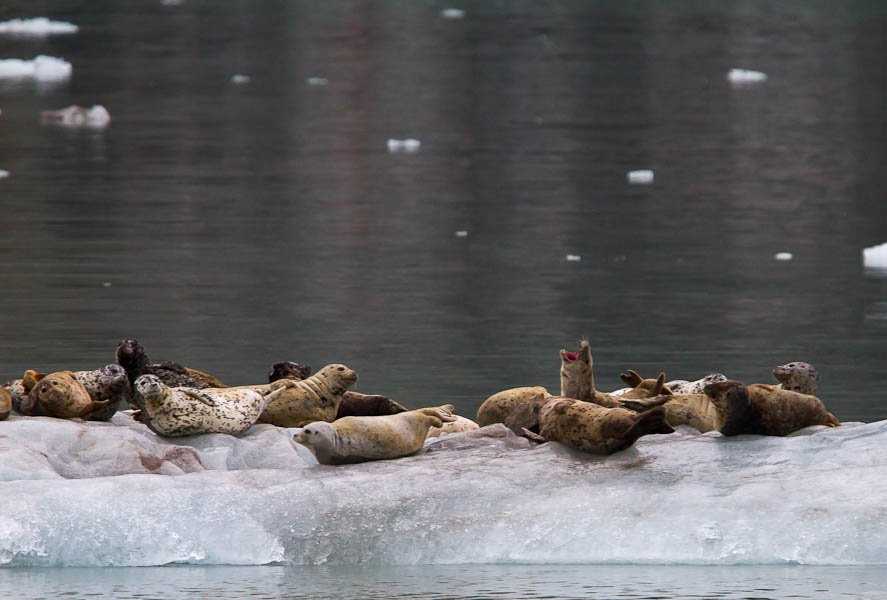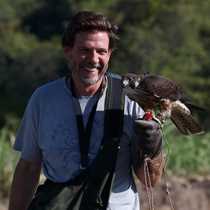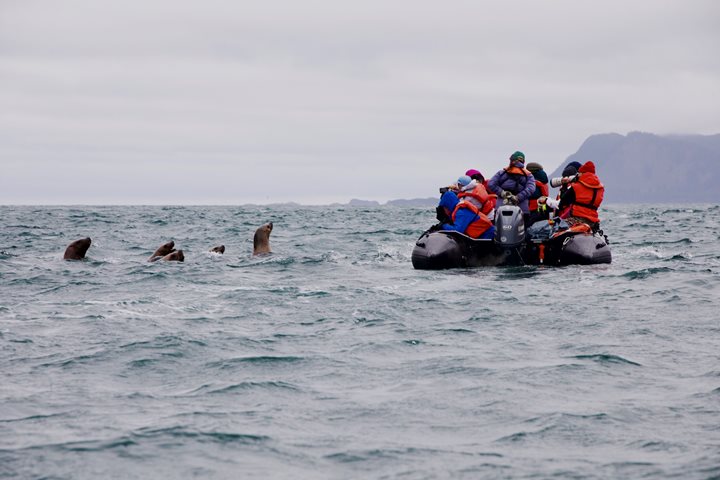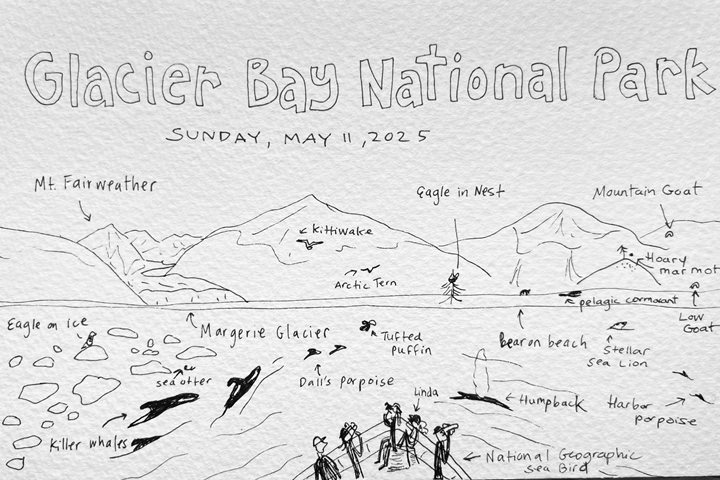We crossed the boundaries to Glacier Bay National Park last night at midnight. This morning we woke up to one of the most scenic views at the face of Johns Hopkins Glacier. With a temperature of 5 degrees Celsius and low cloud cover, we listened to the thunderous sounds of falling ice. We witnessed the calving of the glacier several times.
During breakfast, the National Geographic Sea Lion left Johns Hopkins Glacier behind to continue the day’s exploration down bay. We slowly navigated in the proximity of a beautifully shaped monolith called Gloomy Knob. Here, a lot of the rock is exposed and the scarcity of vegetation makes it easy to find wildlife. We found several mountain goats. With brand-new pelage, due to the proximity of winter, these goats placidly rested in the safety of sheer cliffs and high altitude.
One of the most exciting sightings for the day was a juvenile brown bear, which we could see for a long time. Although it is still that time of the year when fishing for salmon is at its prime, not all bears have unlimited access to salmon streams. The least dominant or the lowest in the hierarchy can be kicked out of the streams and forced to find alternatives for nourishment. We first saw this bear from a very long distance, running as if it was been chased. From the high mountains where we first saw it, it came down to the intertidal zone to feed on barnacles and other invertebrates. Right off our bow, we could see the bear turning rocks over, and scratching the mussel beds to lick the inside of the broken barnacles afterwards.
We kept moving towards Bartlett Cove, and we stopped at South Marble Island, a Steller sea lion haul-out and a bird breeding colony. Although the birds are closing up their breeding cycle, we still got to see many pelagic cormorants, some tufted puffins and one horned puffin.
Once at Bartlett Cove, we went to visit the newly-built tribal house. Beautifully adorned with traditional form-line designs, it represents reconciliation between cultures here in Glacier Bay National Park.







